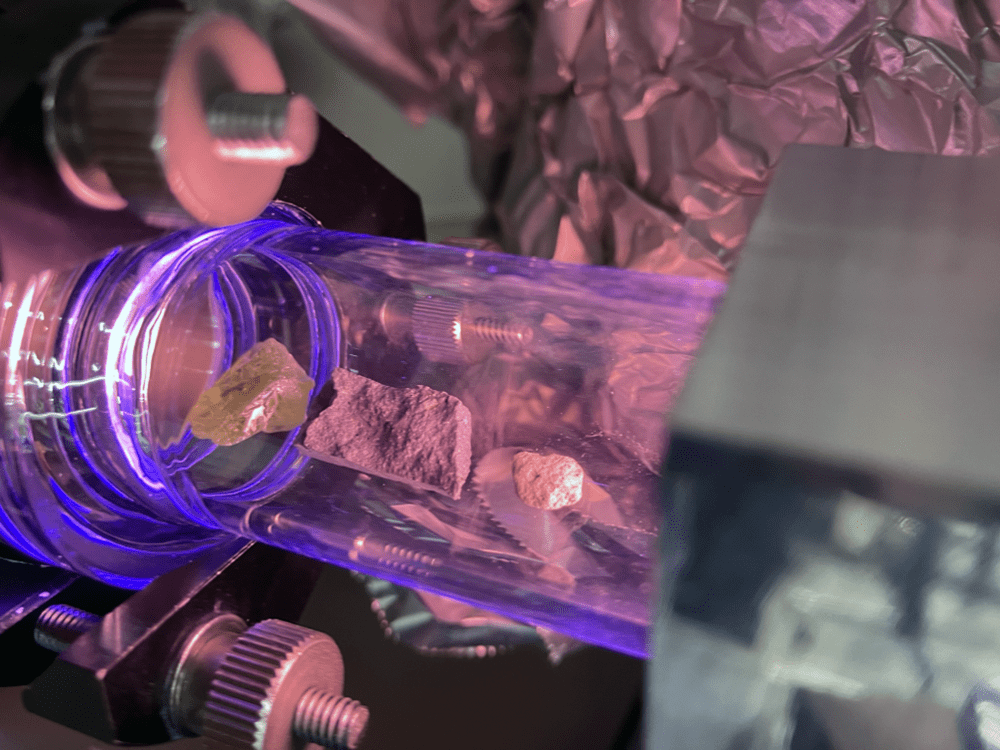What determines the surface “color” of the Martian moon Phobos?
Mar. 17, 2025 | Aerospace Project Research Associate, ISAS people
Research Summary
My research targets are Mars and its moon, Phobos. I am interested in understanding how planetary surface environments have evolved. During my Ph.D., I investigated the evolution of the Martian surface environment by comparing the mineralogical data obtained by Mars rovers with laboratory experiments. Phobos, one of the Martian moons, is a main exploration target of the Martian Moons eXploration (MMX) mission, a collaborative project led by JAXA, NASA, DLR, and CNES. As a project research associate involved in the MMX project, I was wondering if there is a possibility of getting information about Martian evolution through studying Phobos. This led me to the research question: What determines the “color” of Phobos? My study aims to explore whether the surface characteristics of Phobos can provide insights into the broader evolution of the Martian system.
When planetary scientists refer to the “color” of a celestial body, they may mean its actual color, such as the bluish-green color of Uranus or the red color of Mars. However, in some cases, “color” refers to “the slope of its reflectance spectrum*1. Here, I refer to the latter definition. Although Phobos appears almost uniformly gray in visible light (Fig. 1), its reflectance spectra in visible to near-infrared regions show variations in the reflectance slope. As can be seen in Fig. 2, regions with relatively higher reflectance at shorter wavelengths (i.e., visible light, bluer) and those with relatively higher reflectance at longer wavelengths (i.e., near-infrared, redder) are distributed unevenly on the surface of Phobos. In general, the reflectance spectrum of a material provides insights into its chemical properties, such as mineral composition and crystallinity. However, the meaning of this “color” variation on Phobos is under debate, remaining unclear.


By the way, have you ever heard that ancient Mars has once been covered with water like Earth is today? This fact has been revealed through the analysis of minerals and sedimentary layers by numerous (more than 10!) Mars landing missions. However, these sedimentary deposits observed on Mars would require over a million years to form, and maintaining such a warm climate for that long period would require a thick atmosphere. This has led to the interpretation that Mars lost much of its atmosphere over its history. Unlike Earth, Mars lacks a strong magnetic field and also possesses weaker gravity, allowing its atmosphere to escape into space. But what about Phobos during the atmospheric escape? The atmosphere escaping from Mars flows to space as plasma, bombarding the surface of its moon, Phobos. What impact does this have on the surface materials of Phobos?

To answer this question, I am conducting laboratory experiments simulating the conditions in which the Martian atmosphere bombards the surface of Phobos. To use a more technical expression, I replicate plasma mimicking the Martian atmospheric plasma escaping into space utilizing microwave plasma and use this to irradiate various minerals that are thought to exist on Phobos (Fig. 3). The results of the experiments show that the “color” of the minerals changes after exposure to the simulated Martian atmospheric plasma. This finding has been submitted to a scientific journal and is currently under peer review. While the changes are nearly unnoticeable to our eyes, reflectance spectra measurements show evidence of chemical alterations. Notably, the slope of the spectra indicates that some minerals become “redder” while others become “bluer.” This suggests that the distribution of colors observed on Phobos might reflect a mineral composition variation. Furthermore, these results imply that Phobos’s surface materials may contain remnants of the ancient Martian atmosphere, lost to space long ago. By analyzing Phobos samples to be collected by the MMX mission, we might even constrain Martian atmospheric evolution. Along with this scientific research, I also participate in the MMX project, such as the development of IDEFIX Rover to be deployed on Phobos, planning of its operation, development of data analysis systems, and more. Through these activities, I enjoy an exciting time at JAXA.
Terminologies
- *1 Reflectance spectra : the measure of light being reflected by the substance shown at different wavelengths (i.e., spectrum)


 TABATA Haruhisa / Department of Solar System Sciences
TABATA Haruhisa / Department of Solar System Sciences